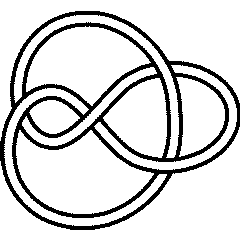Let \( G \) be a discrete group and \( \widetilde X \) a simply-connected CW-complex with a free \( G \)-action, and \( X \) the quotient \( G \backslash \widetilde X \). A particular case is when \( \widetilde X \) is a classifying space for \( G \), i.e. contarctible.
The aim is to study the homology groups \( H_n(\cdot; {\mathbb Z}) \) for finite covers of \( X \). For this suppose that the \( n + 1 \)-skeleton of \( X \) is finite, and take a residual chain \( G_0 = G \supset G_1 \supset \cdots \) of normal, finite-index subgroups of \( G \) such that \( \bigcap_i G_i = \{ 1 \} \). Denote \( X_i = G_i \backslash \widetilde X \). The Lûck Approximation Theorem states that:
\[
\lim_{i \to +\infty} \frac{\mathrm{rank}_{\mathbb Z} H_n(X_i ; {\mathbb Z})} {|G / G_i|} = b_n^{(2)}(\widetilde X \to X).
\]
The question motivating the rest of the talk will be to estimate the growth of \( t(H_n(X_i ; {\mathbb Z})) \) (where \( t(A) \) is the size of the torsion subgroup of a finitely generated Abelian group \( A \)). In full generality it is possible to say that \( \log(t(H_n(X_i ; {\mathbb Z})) / |G/G_i| \) is bounded.
Theorem (Kar–Kropholler–Nikolov): Suppose that \( G \) is amenable and that \( H_n(\widetilde X; {\mathbb Z}) = 0 \) (for example \( \widetilde X \) is contractible). Then
\[
\lim_{i \to +\infty} \frac{t(H_n(X_i; {\mathbb Z}))}{|G/G_i|} = 0.
\]

